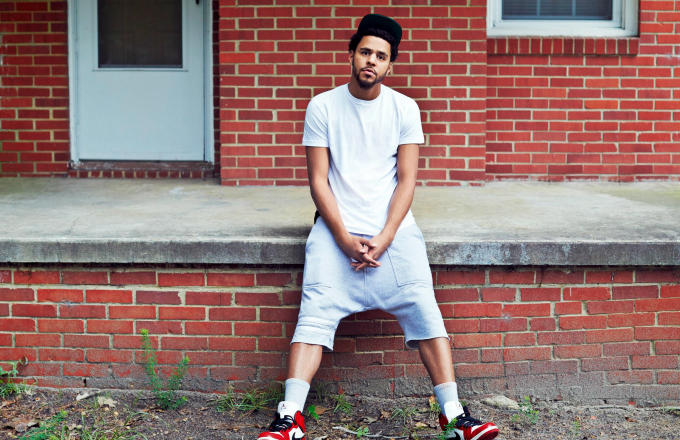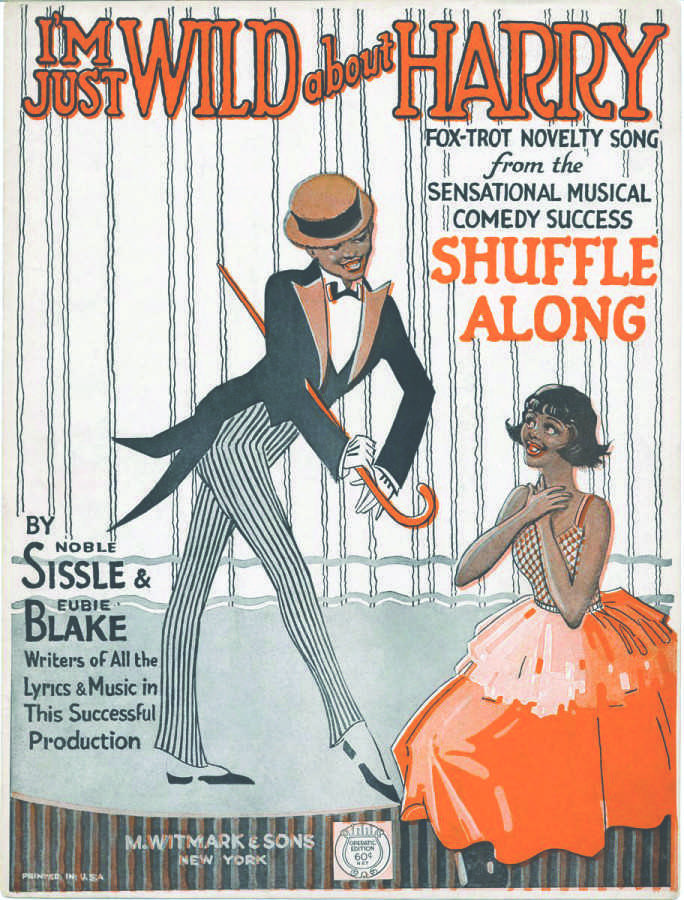Art-ivism: Racial Justice
April 9, 2015
Unequal, discriminatory representation of minority races has long been problematic in the arts, particularly in television shows and films. Issues pertaining to race are still prevalent in film today, including the Oscars’ snub of “Selma” and the thinly veiled racism in sports films like “McFarland USA.” There are advocates at the forefronts of their industries, however, including J. Cole with his song “Be Free,” the all-black cast in “Shuffle Along,” and Lin Manuel Miranda’s race-blind casting in his play “Hamilton.”
J. Cole speaks up for Ferguson
Various hip-hop artists responded to the death of Michael Brown in Ferguson, Missouri, but after releasing “Be Free” J. Cole found himself the leader of hip-hop activism.
Cole constructed “Be Free” to express his grief and to combat racial injustices. In its original version, Cole said, “All we wanna do is take the chains off/All we wanna do is break the chains off/All we wanna do is be free.” Cole also visited Ferguson, where he reportedly spent hours with protesters listening to their thoughts. While there, Cole refused to speak with press, showing that none of this was for exposure, but rather for forming a genuine connection with the people of Ferguson, and letting them know that someone with the power to draw attention to their protests was there and paying attention.
Following the release of “Be Free,” Cole performed the song on the “Late Show With David Letterman” and debuted a new verse instead of performing a song from his new album “2014 Forest Hills Drive.” Cole could have easily used the platform to boost album sales, but instead he made the conscious decision to perform “Be Free,” utilizing the platform he was granted for altruistic reasons and pushing aside monetary gains for a greater purpose.
In the new verse, Cole focused on issues pertaining to President Barack Obama allegedly not bringing any changes concerning race relations. He sings, “No disrespect, in terms of change I haven’t seen any/Maybe he had good intentions but was stifled by the system/And was sad to learn that he actually couldn’t bring any.”
He also addressed the lack of African Americans in influential positions who were college-educated. He sings, “Since all the ballers leaving college early/I turn on the TV and don’t see no brothers with degrees lately.” Cole, an alumnus of St. John’s University, observed how various basketball players leave college early in order to pursue their athletic aspirations instead of continuing their education. He argues if athletes emphasized the importance of education more, then more people could be persuaded into earning degrees.
Cole’s involvement in Ferguson, whether it was releasing “Be Free” or visiting the area, presented himself differently from other hip-hop artists who only used social media to respond. Cole instead placed himself at the forefront of activism, demanding that his and others’ thoughts be heard concerning their immense grief. At a pivotal time, J. Cole utilized his voice and power to represent those who may feel as though they have no voice, continuing to support hip-hop’s potential to be a political force.
A version of this article appeared in the Thursday, April 9 print edition. Email Alexa Spieler at [email protected]
White savior sports movies ignore minorities
Arguably some of the most satisfying and heart-wrenching films from recent memory have been about the struggles and triumphs of sports teams. There is something inspiring about watching a group of underdogs start from the bottom and come out on top.
If one considers the real hero in many of these kinds of films, however, then the feel-good sentiment about the victory of a group of unsung heros is not quite as lighthearted as it seems. Though sports dramas try to portray team solidarity as the ultimate reason for success, there is a not-so-secret hidden agenda that most of these films have in common — they employ a well-off, influential middle-aged white male to be the catalyst for the change and eventual accomplishment that these characters experience.
Minority characters are underrepresented in the media, and sports films are no exception. The team players in classic films such as “Cool Runnings” and “Coach Carter” are notable, not for their athletic abilities, but for their negative stereotypes. Though the audience wants them to succeed, it seems that the reason behind that is because the male leader is responsible for softening viewers to these individuals, as though they need to be introduced to people from different backgrounds from a privileged perspective.
It may seem like these realities would be less prevalent today, but unfortunately they still hold true. Just this year Disney released “McFarland USA,” a film that belongs among the ranks of those mentioned above. Coach Jim White transfers to a predominantly Mexican-American high school and coaches the unmotivated track team. Through increasingly intense pep talks before meets and becoming a father figure to most of the young boys in town, White becomes the official hero of not only his small town, but also the viewers. Without his influence, the film would probably not even be possible, and audiences would not be able to see an increase in minority representation that seems to only occur when a character like White is a major part of the storyline.
Sports films featuring a promising and worthy group of individuals should be celebrating the impetus behind their creation, yet there seems to be an incongruous idea of whom that commemoration belongs to.
A version of this article appeared in the Thursday, April 9 print edition. Email Nora Blake at [email protected]
‘Fresh off the Boat’ refreshing
Rarely does a comedy come along that so effectively portrays Asian-American culture in a realistic, intelligent and nuanced way as ABC’s latest hit, “Fresh Off the Boat.” Margaret Cho attempted to portray Asian-American culture 20 years ago with “All American Girl,” but it was canceled after only one season due to poor ratings and the show’s heavy use of stereotypes. Since the cancellation of “All American Girl,” Asian-American television characters have often been relegated to playing stereotypical well-educated and hyper-competitive best friends or office rivals.
“Fresh Off the Boat,” created for television by Nahnatchka Khan and based on a memoir by Eddie Huang, who is also a producer of the series, successfully subverts these stereotypes. The show successfully walks the thin line between making the story revolve around a family that happens to be Taiwanese rather than a Taiwanese family. In “Fresh Off the Boat,” the main character, 12-year-old Eddie Huang, is constructed as the odd one in the family due to his passion for hip hop. The interplay creates an unsteady dynamic with his parents as they try to support him, but are baffled by his interests. The creators mix Eddie’s exasperation and his parents’ bewilderment to create realistic depictions of familial relationships and the conflict and love that goes behind standing together.
“Fresh Off the Boat” avoids making overused jokes that get cheap laughs by presenting caricaturist accents. Instead, it gets its laughs with an insightful and honest portrait of a family trying to get its bearings in a new home. It adds dimensions to characters that could very easily be flat and stereotypical. This heartwarming portrayal of a family trying to make it against the odds finally brings to the spotlight a sitcom that sketches a candid, sincere representation of the Asian-American family.
A version of this article appeared in the Thursday, April 9 print edition. Email Anubhuti Kumar at [email protected]
Color-blind ‘Hamilton’ fantastic
Lack of diversity has been a common issue in show business, as the prevalence of all-white casts has been criticized for not accurately representing the United States’ demographics and limiting opportunities for minority actors. Largely minority casts are often considered gimmicks and isolating to white audiences, however, as seen in Tyler Perry movies. However, as the 21st century progresses, producers and casting directors are finally realizing the beauty and necessity of color-blind casting, an obvious solution to this glaring problem. The most recent example of this is Tony Award winner Lin-Manuel Miranda’s musical, “Hamilton.”
“Hamilton,” based on Ron Chernow’s biography of first Treasury Secretary Alexander Hamilton, received critical acclaim and financial success after premiering at the Public Theatre. Along with making history enjoyable and accessible, Miranda created one of the most diverse musical theater performances this year. Despite all of the founding fathers being white, the cast of “Hamilton” comprises black and Latino actors, including the Puerto Rican Miranda in the titular role opposite Leslie Odom Jr., the black actor who phenomenally portrays Hamilton’s rival, Aaron Burr.
As Miranda continually notes in interviews, Hamilton was an immigrant. He came to America as an orphan from the Caribbean with nothing and worked his way to becoming one of the most important figures in United States history — he is the embodiment of the American Dream.
Although “Hamilton” includes the numerous feats Hamilton accomplished during his life as well as Notorious B.I.G.-influenced numbers, neither of these are the most important part of the play. The most significant part, rather, is the realization that the races and ethnicities of the characters were irrelevant. The writing of “Hamilton” is fantastic, but each actor is brilliant in his or her role. By opening the roles to everyone, each actor truly earned his or her role. In doing so, the cast of “Hamilton” reflects the diversity of our country.
The founding fathers were white, but Americans are not, and American art should reflect that. It is time for Hollywood to adapt, because with “Hamilton,” Broadway’s already way ahead.
A version of this article appeared in the Thursday, April 9 print edition. Email Marissa Elliott Little at [email protected]
Play looks at black culture
Six-time Tony Award-winner Audra McDonald is set to star in an upcoming musical based on the 1921 musical “Shuffle Along.” Though this lesser-known musical has a cast of all black characters, in the original cast several white actors wore blackface. Despite the racist nature of blackface, the show’s writers were black themselves and supporters of the NAACP. The show was also a big break for many monumental black performers, such as Josephine Baker, Paul Robeson and Adelaide Hall.
The upcoming musical, “Shuffle Along, Or the Making of the Musical Sensation of 1921 and All That Followed,” will tell the story and explain the context of “Shuffle Along” with an entirely black cast.
The casting speaks volumes for the theater’s progression over the past 95 years. A cast featuring actors in blackface is unthinkable by today’s standards. The all-black cast of the new adaptation highlights the admirable qualities of the original “Shuffle Along” while also exploring the context of its less favorable qualities.
Unlike the race-blind casting in the off-Broadway musical “Hamilton,” it is incredibly important that this musical has an all-black cast considering how prominent race was in its creation. Reclaiming this show and adapting to the standards of modern social mores allows “Shuffle Along” to be examined as a piece of theater, rather than just the blackface show.
“Shuffle Along” was originally important because it incorporated jazz-influenced music into the realm of Broadway musicals and celebrated black culture through a mainstream platform. Through a re-examination of “Shuffle Along,” the musical can finally achieve its goal.
A version of this article appeared in the Thursday, April 9 print edition. Email Joseph C. Myers at [email protected]




